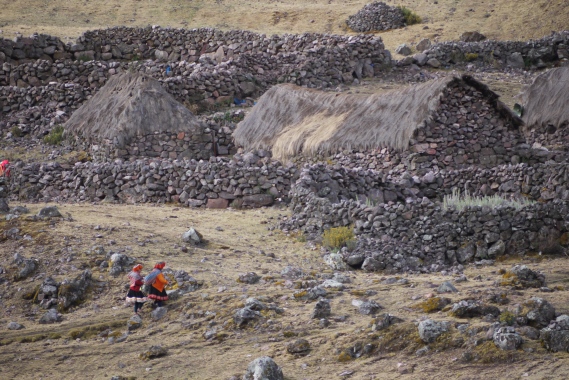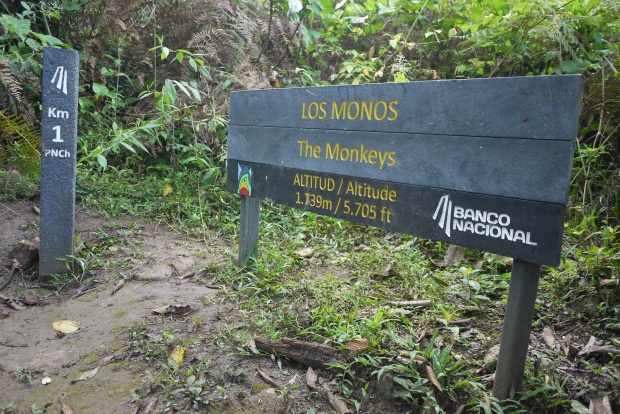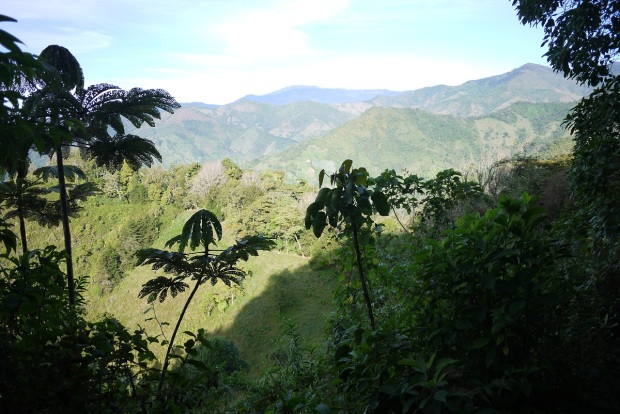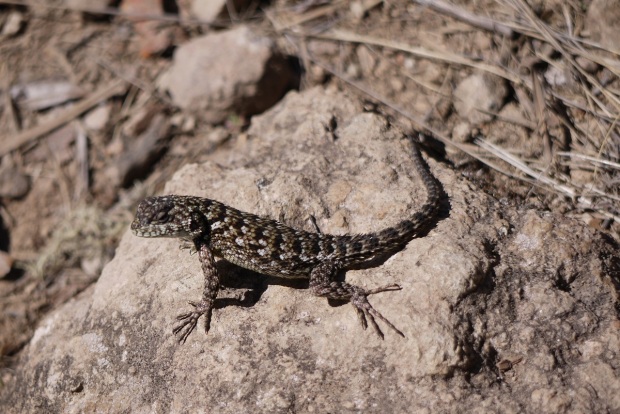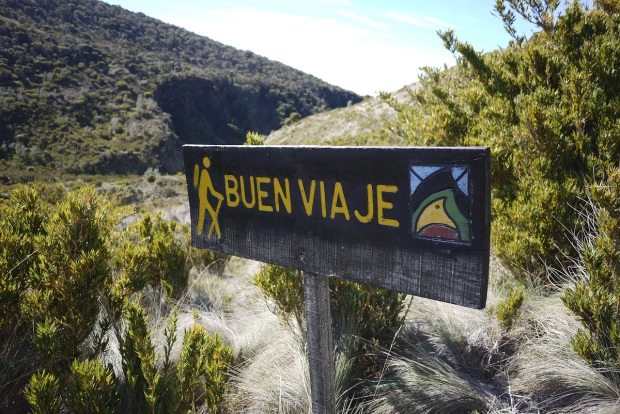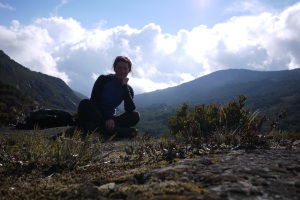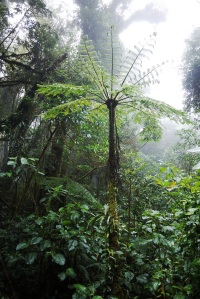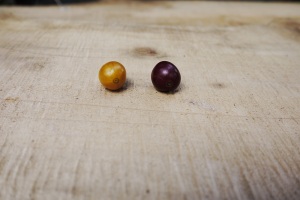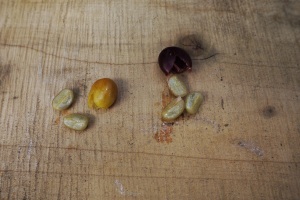Il y a quelque temps, je vous montrais à quoi ressemble le café avant qu’il lui arrive plein de choses pour qu’on puisse le consommer (piqûre de rappel au cas ou : https://audreyslangscape.wordpress.com/2012/12/26/la-verite-sur-le-cafe-version-novices-1ere-partie/).
Maintenant j’ai envie de parler de la récolte. C’est un des moments forts de l’année au Costa Rica, et celui pour lequel je voulais absolument passer du temps dans un pays producteur. Quand on reçoit le café en Europe ou ailleurs, dans le meilleur des cas on a des informations sur la région d’où provient le café, ou encore mieux sur la ferme, le producteur, la variété de café et la façon dont il a été transformé. Qu’en est-il de la récolte? Sans faire un recensement exhaustif des récolteurs du pays, j’avais envie de mettre des images derrière une tradition en perte de souffle.
Quand j’explique avec mes trois mots d’espagnol que je suis venue au Costa Rica pour apprendre plein de choses sur le café, presque tout le monde me raconte un souvenir d’enfance dans les cafetales (là où pousse le café). Je dis “presque” tout le monde, parce qu’il semblerait tout de même qu’il faille soit avoir la quarantaine bien tassée, soit avoir un membre de sa famille possédant une ferme.
En fait la récolte a toujours été une affaire de famille. Elle a lieu de décembre à février, ce qui correspond à la saison sèche (le reste de l’année étant la saison humide) et aux grandes vacances pour les écoliers, et ce dans le but d’avoir plus de main d’œuvre pour la récolte. Avant, toute la famille partait dans les plantations, parfois même dans plusieurs fermes, afin d’aider à la récolte. Même s’il y a toujours un fort aspect émotionnel lorsqu’on me compte ces souvenirs d’antan, il y a également un aspect “corvée” bien présent. Et oui, tout comme les vendanges, ce n’est pas une partie de plaisir, être en plein soleil toute la journée, piqué par les moustiques. Est-ce la raison pour laquelle plus personne ou presque ne veut participer aux récoltes?

Dans la région de Tarrazu, à juste titre célèbre pour la finesse des saveurs du café qui y pousse, avait lieu il a quelques semaines la Feria del café. Sous ses airs de fête populaire, tout un tas d’évènements ayant pour but la découverte du monde du café (car oui, c’est pas parce qu’on est dans un pays producteur qu’on est incollable sur le sujet, est-ce que tous les Français, Italiens ou autres Chiliens savent comment le vin est produit?), du producteur au consommateur. Mais ce qui a retenu mon attention, ce sont les séries de danses plus ou moins traditionnelles qui se sont déroulées chaque jour.
Prenons par exemple ce premier groupe de danseurs (désolée par avance pour la qualité médiocre de la vidéo) :
Nous avons là quelques enfants, habillés en paysans traditionnels (comme sur la photo ci-dessus). Ils ont tout l’attirail du parfait ramasseur de café, le chapeau, le panier et sa ceinture, les sacs de jute, les pelles pour planter les caféiers, tout sauf…des cerises de café! La chanson (que, par ailleurs, peu de gens connaissent, même si elle passait en boucle pendant la féria), vante le bon temps de la récolte. Même s’ils sont plutôt mignons habillés en costume traditionnel, on voit tout de suite à l’imprécision de leur geste qu’ils n’ont pas dû passer beaucoup de temps dans les cafetales justement.
Deuxième vidéo et ce n’est guère beaucoup mieux, la récolte semble être un moment clairement idéalisé pendant lequel on chatouille les arbres et où les garçons font tourner les filles.
Même chanson que dans la première vidéo, autre groupe de danseurs un peu plus âgés. Voilà ce que raconte le refrain :
“Les producteurs sont contents,
la récolte est très bonne,
comme c’est sympa de ramasser le café,
d’être dans les plantations,
parmi les papillons,
il y a 200 ans, le Costa Rica voyait naitre cette tradition de joie et d’émotion”
Je n’ai jamais entendu cette chanson pendant la récolte en tout cas…
Alors que faire? Le café pousse en abondance, mais il y a depuis longtemps trop peu de candidats pour le ramasser. Comme souvent, la seule solution est d’ouvrir les frontières à ceux qui veulent travailler. C’est alors que depuis les années 80, de nombreux Nicaraguayens et Panaméens sont arrivés au Costa Rica par le nord et par le sud, de façon permanente ou de façon saisonnière pour travailler dans les plantations de café ou de cane à sucre. Et voilà que la récolte du café redevient une affaire de famille, puisque c’est souvent en famille que l’immigration s’effectue. On reconnait les femmes du Panama grâce à leurs robes colorées, comme ces deux petites filles :

Alors pourquoi un tel manque de main d’œuvre? Pendant longtemps, c’est parce qu’il y avait bien trop de café à ramasser par rapport au nombre d’habitants. Mais la population Costaricienne s’est accrue très rapidement et maintenant, les conditions de travail difficiles, l’exode “urbain” et probablement l’aspiration à une vie plus moderne n’attire plus grand monde dans les cafetales.
Et il faut dire que si l’on veut bien faire les choses, ce n’est pas chose aisée de ramasser le café. Le problème c’est que, comme on peut le constater sur la photo, les cerises ne mûrissent généralement pas toutes en même temps, ce qui rend le ramassage mécanique quasiment impossible (encore une fois, si on veut faire les choses bien).

Là où ça se complique, c’est que même lorsque l’on ramasse une cerise bien rouge, il arrive souvent que l’envers soit jaune ou vert, donc pas mûr. Il faut donc redoubler d’attention, ce qui n’est pas évident ni très motivant lorsque l’on est payé au poids et non à l’heure. Par contre, il faut bien préciser qu’une telle attention n’est pas portée par tous les producteurs. Je parle ici de fermes relativement petites et visant une qualité de café supérieure à celle de la grande distribution.
Et une fois ramassé, qu’est-ce qu’on fait du café? Si le producteur possède son propre beneficio, la quantité de cerises ramassées est comptabilisée à différents moments de la journée, par exemple en fin de matinée et en fin d’après-midi. Pour cela, comme on voit sur la photo ci-dessous, on les met dans une grande boîte en fer appelée cajuela qui est de taille standard. Comme on mesure les plantations en manzana, la quantité de cerises ramassées possède sa propre unité de mesure, la cajuela, qui est équivalente à 20 litres.

Sur cette photo on voit Don Carlos Ureña, propriétaire passionné de la finca La Pira, qui est l’un des producteurs les plus imaginatif et inspirant que j’aie rencontré jusqu’à maintenant. Il est très attentif à la façon dont les quelques personnes qui travaillent avec lui traitent le café. Pour chaque personne, il écrit la quantité de cerises ramassées en cajuela :

Pour les fermes qui n’ont pas de beneficio, le café est emmené dans un recibidor (les petites maisons en bois le long des routes) où des camions circulent le soir afin de collecter le café déposé dans la journée. Dans le temps, des sortes de calèches en bois très colorées étaient utilisés, comme celle ci-dessous. Désormais on ne les trouve que dans les musées.

Oui, c’est moi, en route pour participer au concours de ramassage de café de la feria de Frailes. Et non, j’ai pas gagné 🙂
L’altitude, les variétés, la composition de la terre, la grande différence de température entre le jour et la nuit, l’ombre, sont autant de facteurs contribuant à la production d’un café de qualité. On oublie parfois que le ramassage est une étape essentielle car c’est une des premières étapes de sélection, on ramasse les meilleurs cerises bien mûres pour faire le meilleur café possible. Même si ça à l’air d’un détail, j’espère avoir montré que c’est un détail qui a toute son importance. Dans un monde idéal, on pourrait imaginer plus de solutions pour aider les producteurs à être encore plus pointilleux, en créant des liens plus étroit entre toutes les personnes impliquées dans la longue chaine de production du café par exemple, en donnant plus de moyens au producteurs. Si ça vous intéresse, je vous conseille d’aller faire un tour sur le site de Tim Wendelboe, torréfacteur (entre autres) norvégien, qui a mené un projet super intéressant en Colombie.
